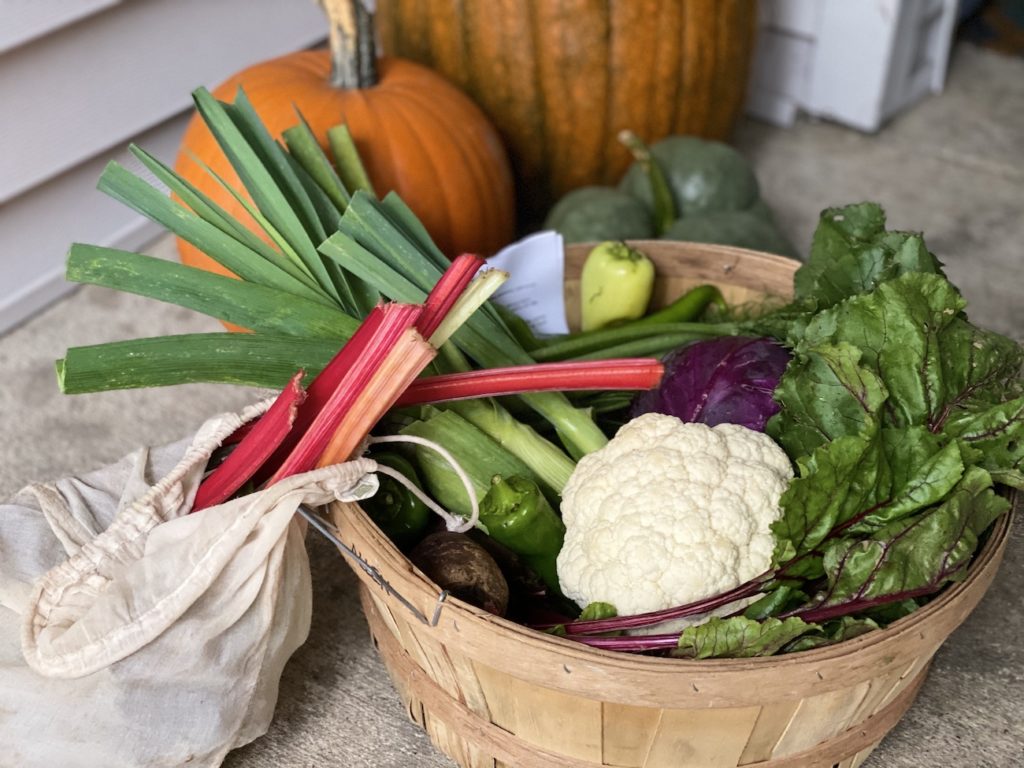
It is full on fall vegetable season, which in the Pacific Northwest means root vegetables, winter squash, and hearty greens. Getting the most out of your fall produce can present a few challenges, but I want to share with you my top 5 tips for using a fall CSA basket, farmer’s market haul, or subscription produce box.
What's a CSA?
When we moved to the PNW from New York City to raise our family, one of the things I really wanted to do was find and join a CSA. Community Supported Agriculture is a fantastic production model in which you commit to buying a “share” of a local farm’s harvest at the beginning of the growing season. When the farm produces well, you get extra, when there are setbacks, you also share in the loss. I find that it balances out and is a wonderful way to support local agriculture and reduce our carbon footprint. The produce travels a short distance and is incredibly fresh, usually having just been harvested the day before. (We subscribe to Pumpkin Ridge Gardens and I can’t say enough good things about them. If you are in the Portland area check them out!)
In a CSA program, you get a portion of the grower’s harvest each week and generally you don’t know exactly what will be in your basket or box until it arrives or you pick it up. You may also receive produce that you are unfamiliar with or that you wouldn’t have given a second glance at the farmer’s market. While I find this exciting, it does present a unique challenge in thinking about meal planning and learning how to use unfamiliar vegetables.
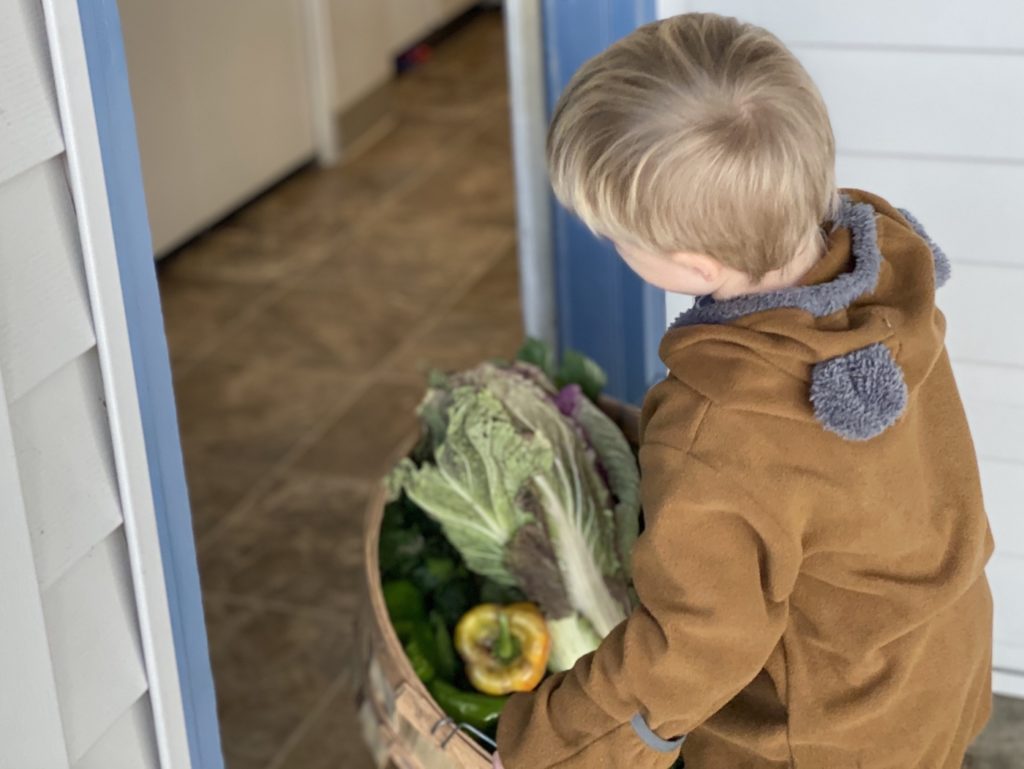
Outside of growing your own food at home, there is no way to get fresher produce than through a CSA or weekly trips to a local farmer’s market. Now, as much as I love going, it definitely doesn’t fit into our family’s schedule to shop at the farmer’s market every Saturday morning- and ours isn’t open all winter long either. Don’t get me wrong, I will definately advocate for eating any vegetables over not eating them, but freshness does matter. Surprisingly, produce can lose 30% or more of its nutrients within a few days (Source)
While a year-round csa may not be available where you live, often they are only offered in the summer months, these tips are applicable to your farmer’s market haul, subscription produce box, and a good quality grocery store produce section.
Here are my favorite tips for a fall CSA basket so you can get the most out of your seasonal produce!
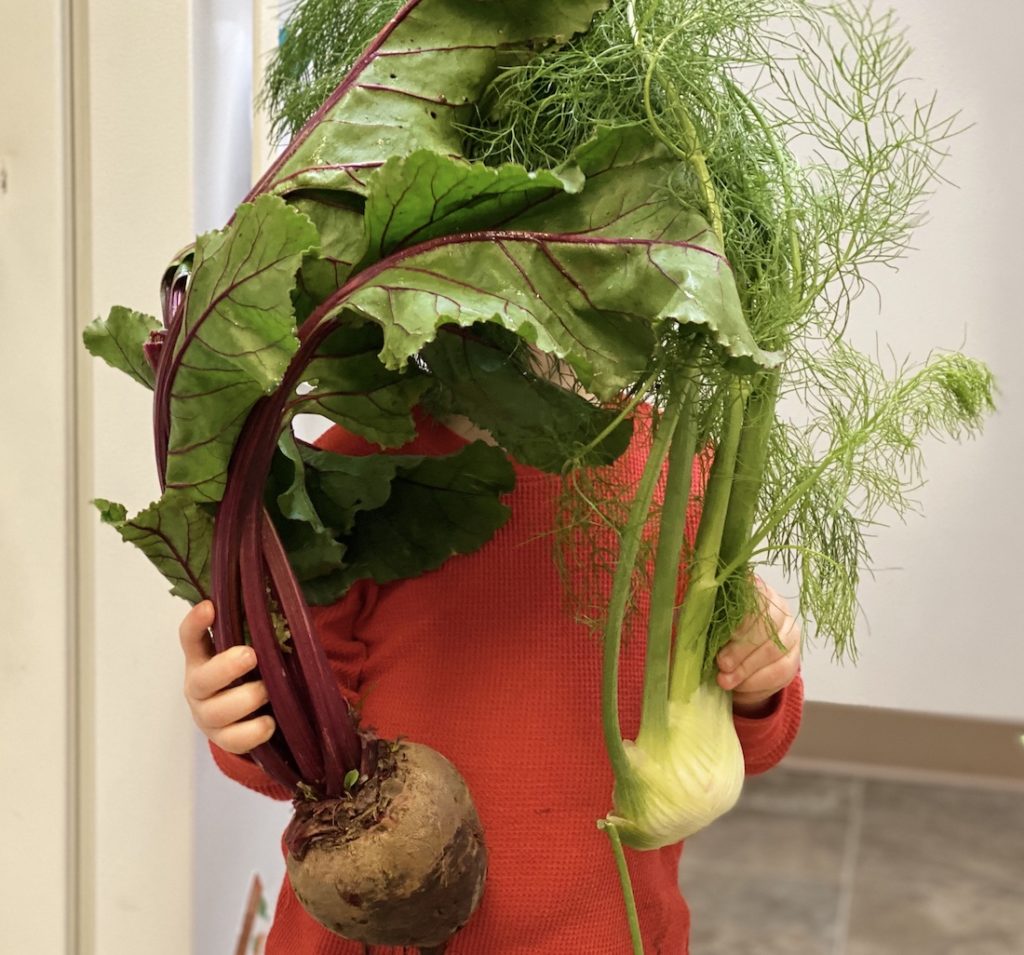
Tip #1: If It Grows Together, It Goes Together
I was accustomed to buying my produce from a grocery store where you can find tomatoes and strawberries in the dead of winter. When confronted with anything I could want at all times of the year, it was hard to know what flavors would work together. So I mostly always bought the same bag of organic spinach, some pre-peeled baby carrots, and maybe some mushrooms. I grabbed a bag of frozen broccoli and called it a day.
One of the convenient things about eating what is produced locally, is that all the flavors of the season will naturally play well together. Fennel, carrots, celery root, squash, beets, rosemary, leeks… these warm earthy flavors “go together.” It takes the guesswork out of planning your meals! Even if you are unfamiliar with a particular food, I’m looking at you rutabaga, you don’t have to wonder if it will taste weird with the rest of your veggies.
Tip #2: Keep a Well-Stocked Pantry
Receiving a sizable portion of my food in this way has changed my meal planning process. I have the best results when I am able to go to the grocery store shortly after I receive my farm basket. This way I can plan the week’s meals around the produce I receive. For many folks this will be a bit backwards from the way you’ve traditionally approached meal planning.
That being said, I can’t always do my supplemental shopping right after the basket is delivered on a Friday afternoon. As anyone with small children knows, this is NOT the best time to go to the grocery store!! Having a well-stocked pantry and freezer enables me to create delicious, vegetable-forward meals without needing to run out and buy a bunch of stuff. You may already stock things like oils, vinegars, flour and baking basics, seasonings, broth, etc. In addition, I also make sure to keep on hand staples like beans, hearty grains, pasta, eggs, cheese, nuts, chicken sausages, bacon, and frozen chicken breasts. These ingredients have a long shelf or fridge life and work to pull meals together quickly from whatever the farm throws at me.
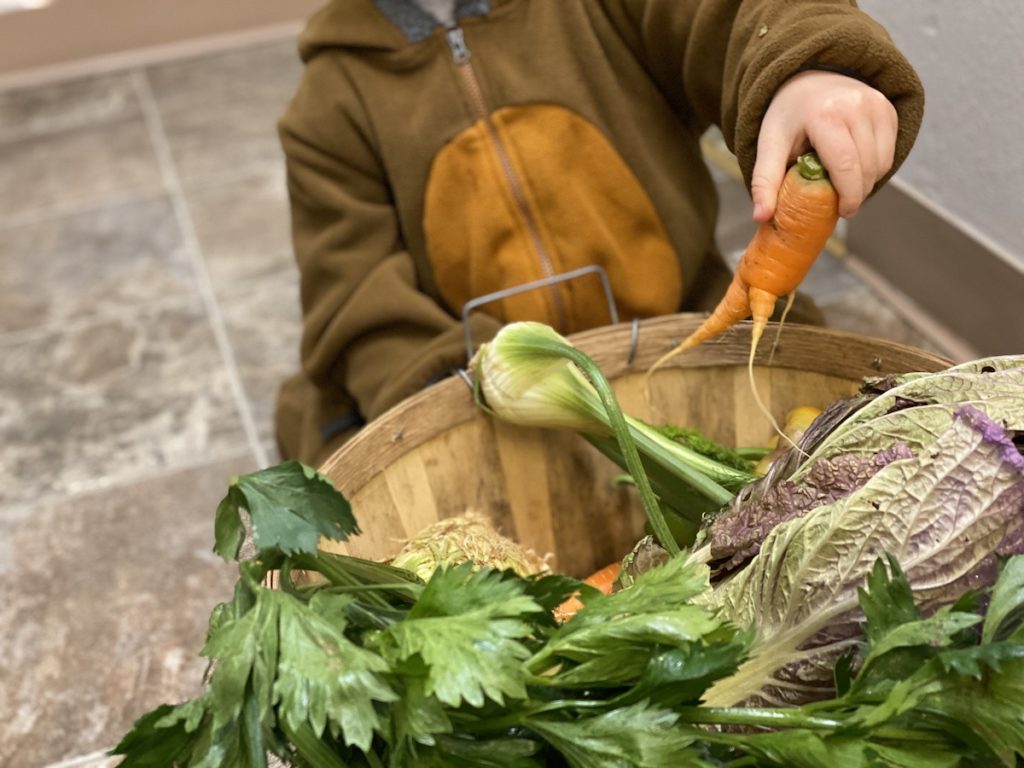
Tip #3: Let the Veggies Be the Star of the Show
Like many of us, I grew up with the idea that a good meal consisted of a large portion of animal protein, a vegetable side, and a grain. But as it turns out, meat is expensive. It is costly to my grocery budget and also for the environment. I would prefer to always buy organic chicken and grass fed beef, but to be honest with you, I can’t always afford them. In an effort to save money and live more sustainably, I started experimenting with a more plant based diet. And perhaps surprisingly, we don’t miss the meat.
The transition was slow, a Meatless Monday here and there. But by allowing the vegetables to move from supporting player to star of the show, I am able to pack more diversity and creativity into our diets, not to mention use my farm basket to its fullest. Eggs, beans, mushrooms, cheese, and nuts can bulk up meals and add protein. I like to think of the meat as more of a side dish. Shredding chicken or pork also gives a meal that “meaty” feel while keeping the actual portion small. This works especially well in soups and stews.
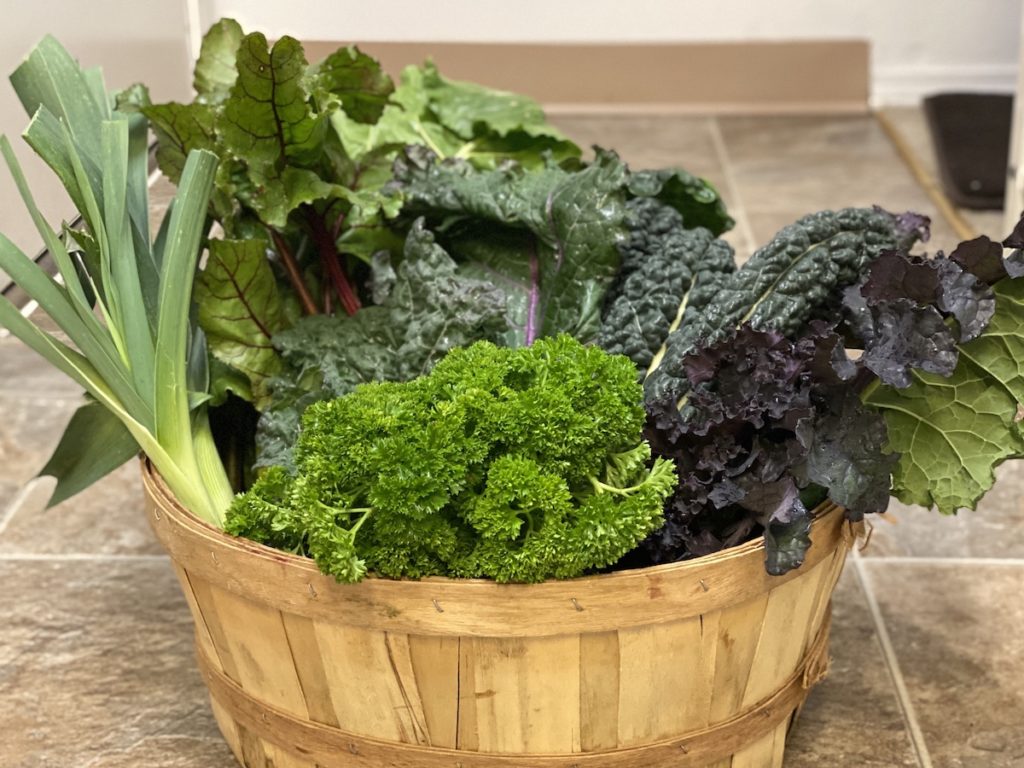
Tip #4: The Art of Substitution OR Greens are Greens
I used to get really hung up on recipes. Don’t get me wrong, I love that I can instantly find a hundred recipes on the internet for any random ingredient I type in. But I got a little bogged down trying to follow all of this precise advice. If I needed some ideas to use my collard greens and acorn squash but the recipe called for kale and butternut, I would keep looking. It took me awhile to realize that greens are greens and squash are squash. I don’t mean to say that they all taste exactly the same, but that they are generally speaking, substitutable for each other.
Now that I know that the flavors of the season will play nicely together, I can substitute with a little more confidence. The same goes for other ingredients in a recipe. Perhaps it seems obvious, but thinking about the function of an ingredient in a recipe allows me to swap out what is listed for something similar that I have in my (well-stocked) pantry. Don’t be afraid to be a little creative.
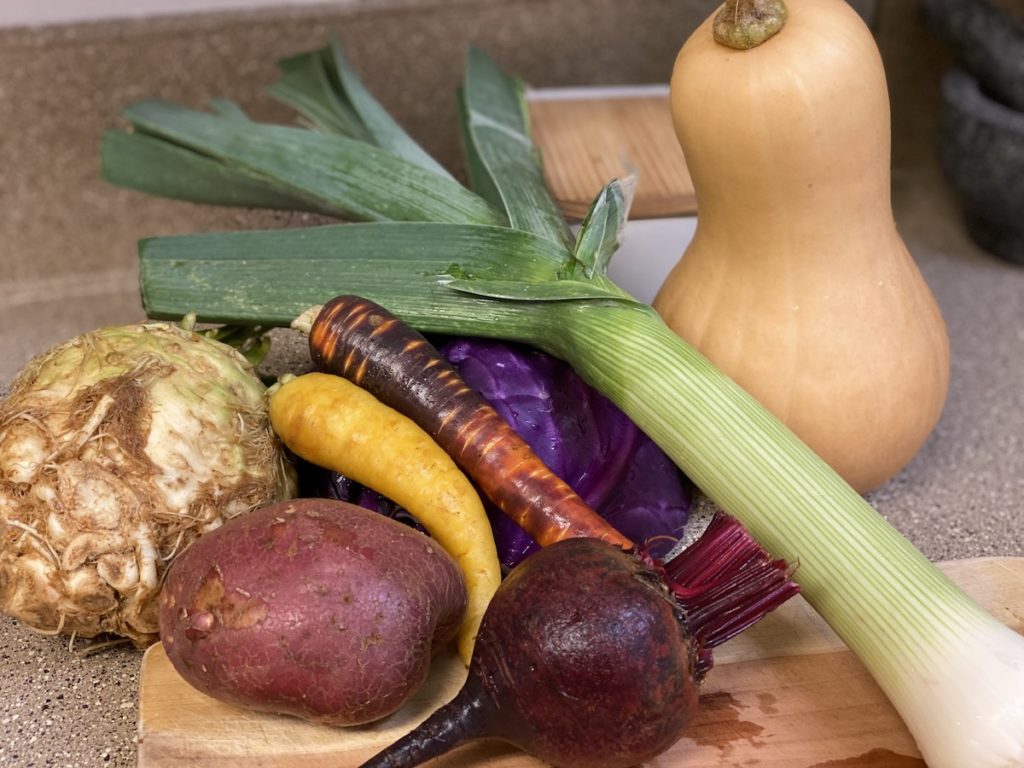
Tip #5: When in Doubt, Roast it
Alright enough with the theory, how do we cook this weird stuff? Well, when in doubt, I roast it. Virtually every vegetable can be roasted and fall and winter produce is especially delicious cooked this way. The dry heat of a hot oven breaks down and caramelizes the natural sugars in vegetables, resulting in deep, complex flavors. It’s the easiest kitchen magic. And as an added bonus, roasting transforms many a mundane vegetable into something even picky eaters will go for. If you have small children or little ones new to eating solid foods, the soft texture of these veggies makes it easy for them to mush up.
How to Roast Everything: An Un-Recipe
By now, you already know that all of your in-season produce will taste great together. This is the first in a series of “un-recipes” I want to share with you. In addition to these tips on using a fall CSA basket, a use several sets of general guidelines as a base for most of my weeknight cooking. The idea behind an un-recipe is that you can substitute whatever you have on hand and add a few of your pantry basics to make a satisfying, creative, and nutrient dense meal.
Grab a colorful mix of whatever you’ve got around and let’s get cooking.
For Most Root Vegetables, Squash, and Crucifers:
- Preheat oven to 425° F
- Wash all produce and peel if necessary. Chop vegetables into similar, bite sized pieces.
- Toss veggies in a bowl with a swirl of olive oil (or other oil of your choice) and sprinkle with a few pinches of salt and fresh ground pepper (and optional seasonal chopped herbs).
- Spread the mix onto a baking sheet giving them plenty of space. Do not overcrowd the pan! If the pieces are too close together, the vegetables will steam not roast. Use a second pan if necessary.
- Roast for approximately 30 minutes until the pieces are fork tender and some char has formed. This is a little variable depending on your particular oven and the size of your chop. Keep an eye on it until you find what works best for you!
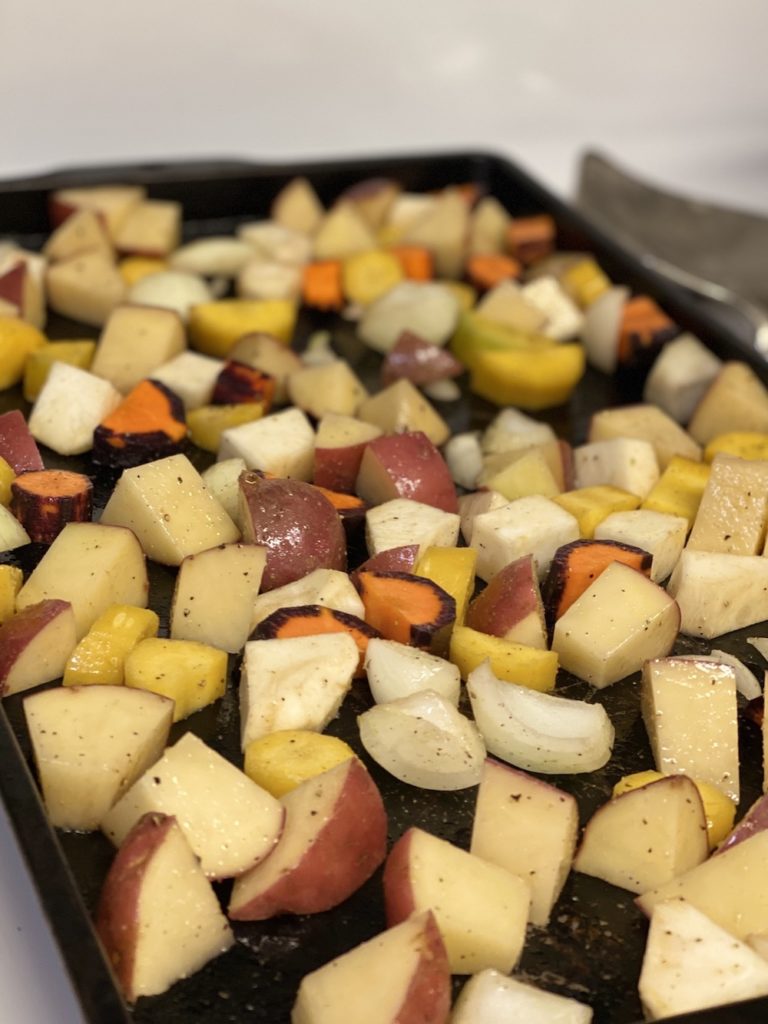
For Cabbage:
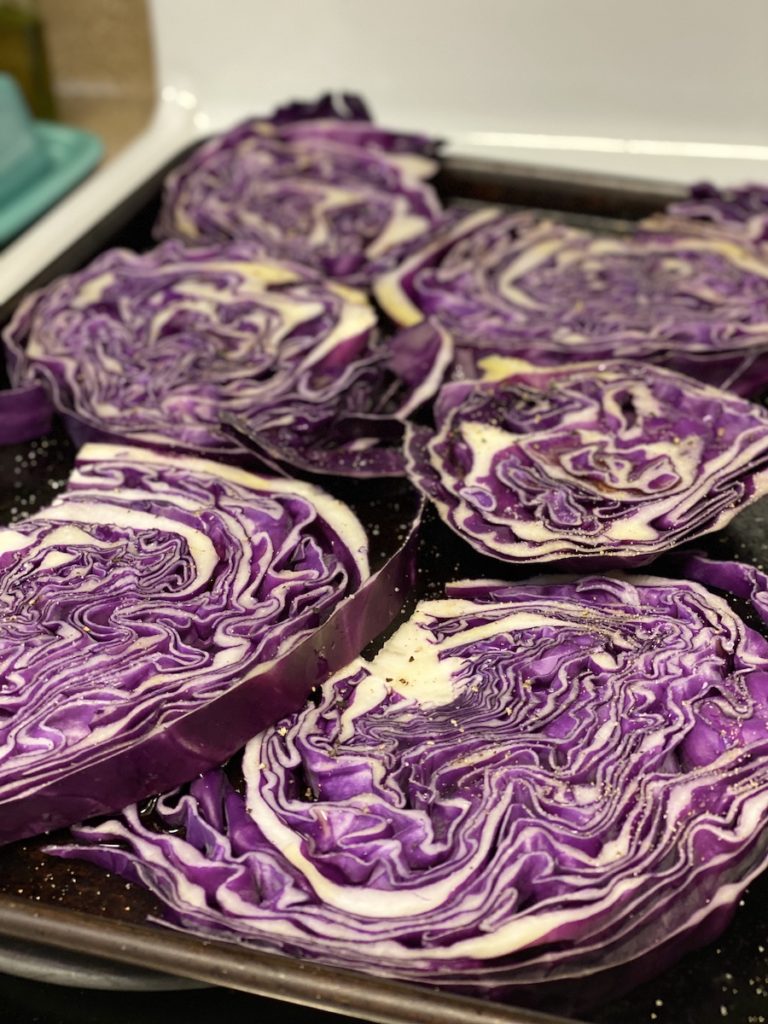
- Preheat oven to 425° F
- Slice cabbage into 1 inch thick discs and lay flat on a baking sheet.
- Drizzle with olive oil and sprinkle with salt, pepper, and optional seasonal herbs.
- Roast 30 minutes, turning the rounds once about halfway through cooking time.
For Beets:
- Preheat oven to 425° F
- Scrub and chop beets into bite sized pieces with the skin on, discarding the top and “tail”.
- Place on a sheet of aluminum foil and drizzle with olive oil, and sprinkle with salt and pepper.
- Fold the sides and ends of the sheet up into a sealed packet and place on a baking sheet.
- Roast 30 minutes until fork tender.
- Carefully open the foil packet and allow the beets to cool enough to be handled. Using your fingers gently push the skin off the pieces and discard.
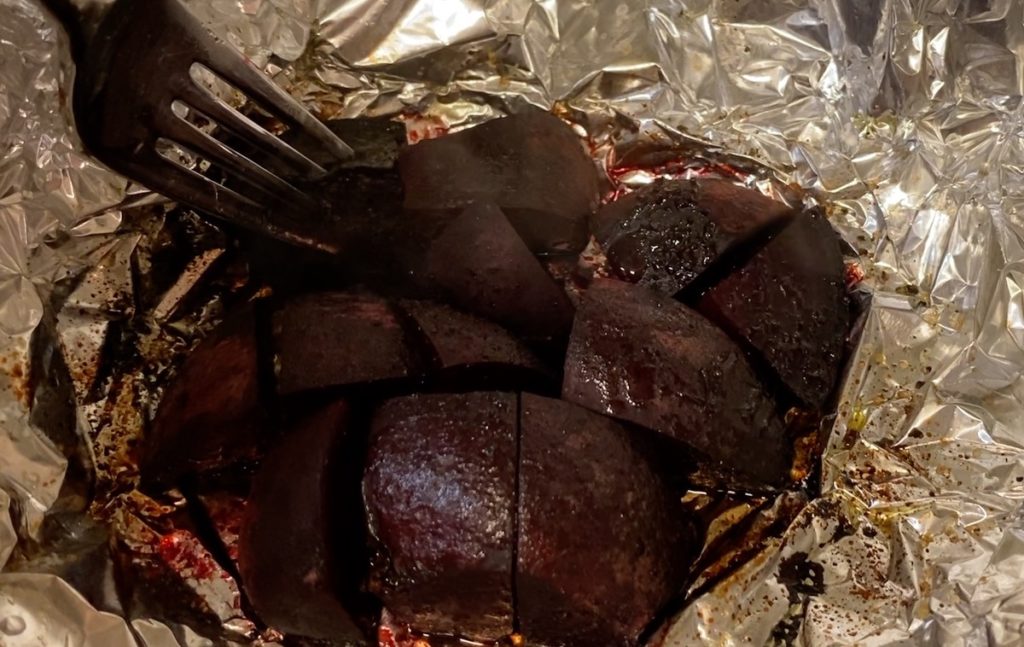
Ideas for Using Roast Vegetables
Ok, you have roasted up a big batch of veggies, now what? Well, these delicious, tender morsels are seriously versatile! Again, think beyond the side dish. Using mainly ingredients from our well-stocked pantry, here are a few of my favorite ways to turn roasted vegetables into weeknight meals.
- Sheet Pan Meal: Add sliced chicken sausage or mushrooms to the baking sheet with your vegetable mix to transform it into a full meal.
- Fancy Fall Pasta: Toss them with some noodles and pesto. Or saute a few cloves of garlic in some olive oil or melted butter to make a quick sauce. I love topping it with parmesan or feta.
- Flavorful Grain Bowl: Add them to a bowl of quinoa, barley, rice, or other grain to make a roasted veggie bowl. A crumble of bacon, goat cheese, and/or some wilted greens will really take this up a notch.
- Just Add Eggs: Top them with a runny fried egg or chop up the leftovers to use in an omelette, frittata, quiche, or scramble. Breakfast for dinner- yes, please!
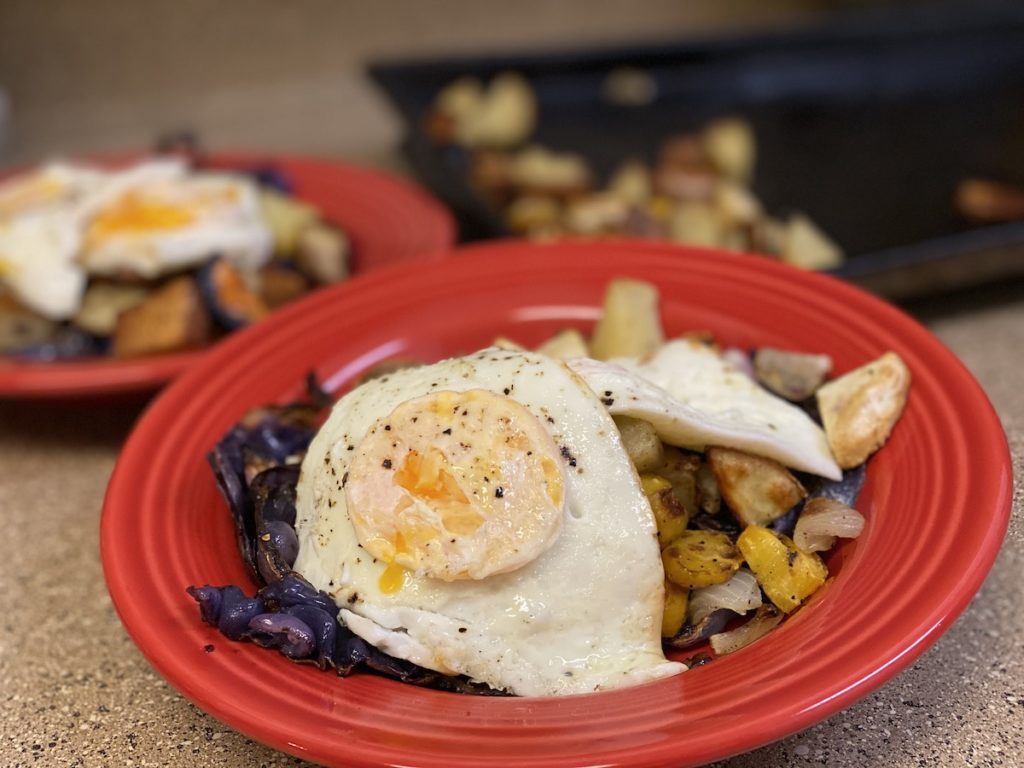
- Easy Weeknight Soup: Simply throw your roasted veggies in the blender with some vegetable or chicken broth and heat it up on the stove.
- Liven Up Your Salad: An unexpected addition, roasted vegetables lend major flavor to your cold salad. This is especially yummy with roast squash, sweet potatoes and crucifers like broccoli and Brussels sprouts.
- Pizza! This is another great way to use up leftovers. These gems make gourmet pie toppings.
- Pasta Bake Magic: What veggies? I don’t know about you, but my family will eat anything involving noodles and cheese.
- Roasted Veggie Hummus: Bonus un-recipe! Toss 2 cups of roasted veggies, a can of chickpeas, 2 tablespoons of lemon juice, and a clove of garlic into a food processor. Season with a teaspoon of salt and pepper to taste. Pulse to combine and stream in a few tablespoons of olive oil. This is great as a snack, of course, but it is really yummy as a pasta sauce.

Eat those veggies, friends! What are your favorite fall vegetable tips and tricks? Drop me a note below! Check back next week for more tips for using a fall CSA basket. Be sure to check out the video tutorial for How to Roast Everything.
Roast Everything: An Un-Recipe
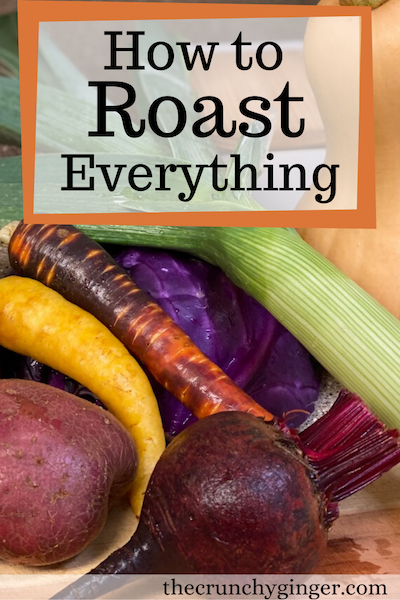
Your in-season produce will all taste great together. So grab a colorful mix of whatever you’ve got around and make some veggie magic.
Ingredients
- Assortment of vegetables: parsnips, potatoes, squash, onions, fennel, celeriac, cabbage, beets, etc
- Extra Virgin Olive Oil (or other cooking oil of choice: coconut, avocado, etc)
- Kosher or sea salt
- Ground pepper
- Optional: Other seasonal herbs or choice (thyme, rosemary, etc)
Instructions
- Wash all produce and peel if necessary. Chop vegetables into similar, bite sized pieces.
- Toss veggies in a bowl with a swirl of olive oil (or other oil of your choice) and sprinkle with a few pinches of salt and fresh ground pepper (and optional seasonal chopped herbs).
- Spread the mix onto a baking sheet giving them plenty of space. Do not overcrowd the pan! Use a second pan if necessary.
- Roast for approximately 30 minutes until the pieces are fork tender and some char has formed.
- Slice cabbage into 1 inch thick discs and lay flat on a baking sheet.
- Drizzle with olive oil and sprinkle with salt, pepper, and optional seasonal herbs.
- Roast 30 minutes, turning the rounds once about halfway through cooking time.
- Scrub and chop into bite sized pieces with the skin on.
- Place on a sheet of aluminum foil and drizzle with olive oil, and sprinkle with salt and pepper.
- Fold the sides and ends of the sheet up into a sealed packet and place on a baking sheet.
- Roast 30 minutes until fork tender.
- Carefully open the foil packet and allow the beets to cool enough to be handled. Using your fingers gently push the skin off the pieces and discard.
Preheat oven to 425° F
For Most Root Vegetables, Squash, and Crucifers:
For Cabbage:
For Beets:
This is so useful! Can I link to this post from our website? Thank you for the great shout out!
Thank you, Polly! Yes, please! I would love that so much.
Pingback: Alternative Pesto- Everything Green is a Pesto Waiting to Happen • The Crunchy Ginger
Pingback: Baking with Vegetables • The Crunchy Ginger
Pingback: Instant Ramen Soup in a Jar • The Crunchy Ginger